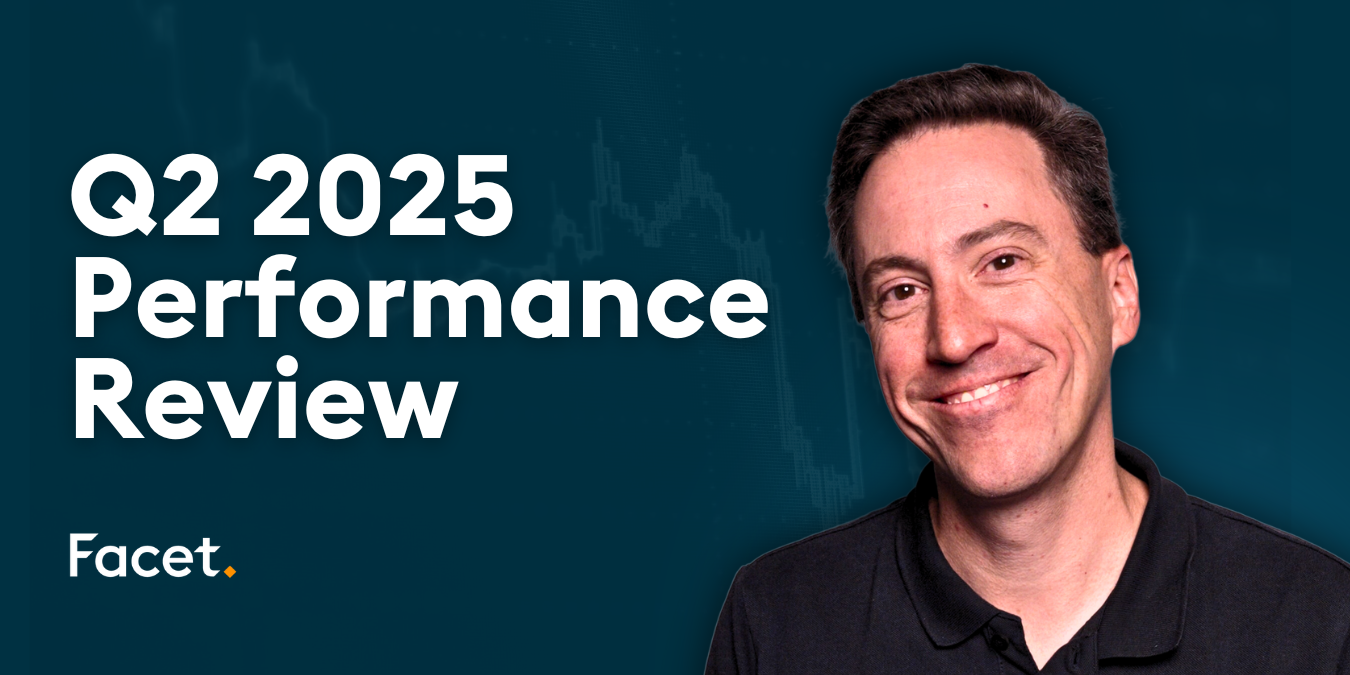
The information provided is based on the published date.
Key takeaways
- Mutual fund fees can significantly impact investment returns
- Fees include management fees, shareholder fees, and annual fund operating expenses
- Mutual funds are categorized as active or passive, each with its own fee structure
- Actively managed funds tend to have higher fees due to the comprehensive management involved
- Passively managed funds, such as index funds and ETFs, typically have lower fees
Fees matter. They can quietly diminish your savings without you even noticing.
In this guide, we take a deep dive into the various mutual fund fees, including some you’ve likely never heard of.
We’ll analyze how they work and their impact on your long-term investment potential.
Most importantly, we’ll show you how to avoid the dreaded fee trap and make choices that keep more money in your pocket.
Breaking down mutual fund fees
When investing in mutual funds, it is imperative to consider the associated fees carefully. These include management fees, shareholder fees, and annual fund operating expenses. Investors incur charges for holding mutual funds, which can significantly impact investment returns.
Certain funds charge direct fees to cover individual investor transactions and account costs, while others charge periodic fees to all shareholders. Investors can incur these fees when they buy or sell a fund.
Grasping the concept of these fees is vital since even minor differences can lead to significant disparities in investment returns over time.
Management fees
Management fees are a significant part of a mutual fund’s annual expenses. These fees are paid to investment advisors for portfolio management and certain administrative tasks. They also cover the fund’s operating costs, including hiring the portfolio manager and investment team.
Management fees can vary widely, from as low as 0.10% to more than 2% of the fund’s assets under management. However, remember that transaction costs, which are the costs related to buying or selling securities, aren’t included in the management fee. This means that investors may incur additional costs beyond the stated management fee.
Shareholder fees
In addition to management fees, investors also incur shareholder fees. These fees can include:
- Sales loads
- Redemption fees
- Exchange fees
- Account fees
- Purchase fees
Purchase fees, which are separate from front-end loads, are paid to the fund to cover the costs associated with purchasing shares, including the purchase fee.
Three types of fees may be charged to shareholders when they sell fund shares:
- Redemption fee: charged when shareholders redeem their shares to defray the fund’s costs associated with the redemption.
- Exchange fee: imposed for transferring to another fund within the same fund group, often assessed to prevent excessive trading.
- Account fee: charged for the maintenance of investor accounts and typically linked to a minimum account balance requirement.
Annual fund operating expenses
Annual fund operating expenses include management fees, 12b-1 marketing and distribution fees, and other administrative costs. Funds typically pay distribution and service (12b-1) fees to cover distribution and shareholder service expenses, which are paid out of fund assets.
Expenses in this category include:
- Shareholder service expenses not covered by 12b-1 fees
- Custodial expenses
- Legal and accounting expenses
- Transfer agent expenses
- Other administrative costs
All these fees and expenses are captured in the management expense ratio (MER), a broad measure of the cost of the fund to an investor. The MER is detailed in the fund’s prospectus each year and captures additional costs beyond the management fee, increasing the overall fee burden.
Types of mutual funds and their fee structures

Mutual funds are broadly categorized into active and passive funds.
Actively managed funds involve a more hands-on approach, with fund managers and research teams making buying and selling decisions to outperform the market. On the other hand, passively managed funds aim to mirror the performance of a specific stock index and involve less manual intervention.
Both types of funds have their own fee structures. Actively managed funds generally have higher fees due to the comprehensive management involved, while passively managed funds, such as index funds and ETFs, typically have lower fees.
Interestingly, average expense ratios for actively and passively managed equity mutual funds have generally decreased in recent years.
Actively managed funds
Actively managed funds generally have higher management fees than passively managed funds. These higher fees are attributable to:
- The costs associated with portfolio managers
- The costs associated with research teams
- The costs associated with actively buying and selling securities in an effort to outperform the market.
Because of the comprehensive management involved, actively managed funds typically have higher expense ratios than their passively managed counterparts, such as index funds.
It’s also worth noting that some actively managed funds, known as “closet trackers,” may be less transparent about mimicking an index and often charge higher fees without necessarily providing better performance than low-cost index funds.
A portfolio that maintains an active share ranging from 20% to 60% is commonly referred to as a closet indexer (tracker). (Active share is a metric indicating the percentage of holdings that deviate from the benchmark index.)
– 20% to 60%
Active share range of a closet indexer
Passively managed funds
On the other hand, passively managed funds like index funds and ETFs typically incur lower operational costs than actively managed funds. These funds aim to match the performance of a specific stock index, while ETFs offer flexibility similar to stocks and can be traded throughout the trading day.
The presence of low-cost exchange-traded funds in the market has contributed to the overall reduction in mutual fund expense ratios. So, if you’re looking for a cost-effective investment option with lower management fees, passively managed funds could be the way to go.
Load vs. no-load funds

Another important factor to consider when investing in mutual funds is whether the fund is a load or no-load fund. Load mutual funds include a sales charge or commission paid to an intermediary, such as an adviser or a broker, for their services when shares are purchased.
Different classes of load funds have varying sales charges:
- A-shares have front-end sales charges.
- B-shares have back-end sales charges.
- C-shares have level sales charges.
Conversely, no-load mutual funds can be purchased without any sales charges, allowing the full amount of the investor’s money to be put to work immediately. However, it’s important to note that the investment amount is directly reduced by sales charges with load funds, impacting the total funds available to generate returns.
Sales loads
Sales loads are fees charged to the investor either at the time of purchase (front-end load) or at the time of redemption (back-end load).
When a front-end sales load (A-share) is applied, it reduces the amount of money invested in mutual fund shares during the initial purchase. This load is deducted from the investment upfront before the funds are allocated. Brokers are compensated through sales loads for selling mutual fund shares, which can include front-end loads paid when purchasing fund shares.
On the other hand, back-end loads, also known as deferred sales charges or “B-shares,” decrease over time, incentivizing a longer-term investment in the fund. The fund’s prospectus details the schedule and rate at which the back-end load decreases, with different share classes (A, B, C) having varying structures for these loads.
No-Load Funds
No-load mutual funds offer a significant advantage to investors as they do not charge sales loads, providing potential cost savings. However, these funds may levy other fees, such as:
- Purchase fees
- Redemption fees
- Exchange fees
- Account fees
Despite these other charges, investors typically save on costs by avoiding the sales loads typically charged by load funds when they opt for no-load mutual funds. Moreover, the increased demand for no-load funds that often exclude 12b-1 fees has contributed to the decrease in overall mutual fund expense ratios.
Mutual fund fees and expenses

Evaluating mutual fund fees is a critical step in making informed investment decisions. A difference of 1% in annual operating expenses can equate to a 23% decrease in returns over 20 years due to the compound effect of fees on investment earnings.
Even small differences in fees can result in substantial divergences in investment returns over time, as noted by the SEC. Mutual fund companies must show performance net of expenses, meaning the returns reported to investors already account for the deduction of fees and expenses. Hence, both the annual fund operating expenses and shareholder fees should be diligently considered to comprehend the total cost burden.
Expense ratios
Expense ratios represent a mutual fund’s ongoing annual operating expenses as a percentage of the fund’s average net assets, also known as the fund’s expense ratio. They are crucial because they directly reduce the net return on an investor’s mutual fund investment.
Over the long term, expense ratios can profoundly affect investment earnings. For example, an expense ratio of 0.75% versus 0.10% can result in thousands of dollars difference over 30 years. This is particularly impactful in retirement accounts like a 401(k) or Roth IRA due to compounding effects.
Comparing funds
When evaluating mutual funds, it’s not enough to look at just one aspect. A comprehensive comparison should involve considerations such as expense ratios, management styles, and performance. Comparing expense ratios is vital as they directly influence net investment returns.
The primary difference between index funds tracking the same index is often their cost; hence, selecting funds with lower expense ratios is crucial for improved long-term compounding. Moreover, actively managed funds, which generally incur higher costs, do not always offer better returns compared to lower-cost passively managed funds and can sometimes perform worse.
Strategies for minimizing mutual fund fees

Although mutual fund fees might appear unavoidable, strategies exist to reduce these costs. These include selecting low-cost funds, using discount brokers, and investing in ETFs.
Investors should focus on mutual funds with low expense ratios, as they can significantly impact returns over time. No-load funds, which do not charge sales commissions, can help minimize investors’ costs. Discount brokers offering no-transaction-fee mutual funds can reduce the cost of buying and selling funds.
Finally, ETFs typically have lower management fees and no sales loads, making them a more affordable investment vehicle than many mutual funds.
Selecting low-cost funds
Selecting low-cost funds is a smart strategy for minimizing mutual fund fees. High-cost funds must outperform low-cost funds to generate the same returns for investors, making low-cost funds generally a more advantageous option.
Investors who are conscientious about fees prefer no-load funds, as they allow for the maximization of investment returns through the avoidance of sales charges.
Using discount brokers
Using discount brokers is another effective strategy to minimize mutual fund fees. These brokers help investors save money as some brokers offer no-transaction-fee mutual funds.
When purchasing mutual funds through a broker, investors typically incur a commission fee, but discount brokers may offer lower commissions. They enable the creation of a diversified investment portfolio at a lower cost compared to traditional brokers.
Discount brokers allow investors to make trades from any location at any time without visiting a physical office.
Investing in ETFs
Lastly, investing in ETFs can be a cost-effective strategy. ETFs often have lower expense ratios than mutual funds due to their passive management style.
Furthermore, ETFs have several advantages:
- They are tax efficient because they can minimize capital gains distributions through the creation and redemption process.
- They provide daily disclosure of their holdings, offering transparency and enabling investors to know exactly what they own.
- Many ETFs have no minimum investment requirements, making them accessible to investors with varying financial capacities.
Final word
To sum it up, understanding mutual fund fees is crucial for optimizing your investment returns. From management fees to shareholder fees to annual fund operating expenses, each type of fee has a potential impact on your bottom line.
Whether investing in actively managed funds, passively managed funds, load funds, or no-load funds, being aware of the associated fees and expenses is key. And remember, there are strategies you can employ to minimize these costs, such as selecting low-cost funds, using discount brokers, and investing in ETFs.
Frequently Asked Questions
What fees are charged for mutual funds?
Mutual funds may charge various fees, including investment advisory fees, marketing expenses, brokerage fees, and expense ratios typically ranging from 0.25% to 1% annually. If purchased through a broker, commissions ranging from $10 to $75 per trade may also apply.
Do mutual funds come with a fee?
Mutual funds come with operating expenses, management fees, transaction costs, and ongoing fund operating costs. These fees are important to consider as they affect the overall return on your investment.
What are the upfront fees for mutual funds?
The upfront fees for mutual funds typically include sales loads, which can range from 3.75% to 5.75%. For example, with a 5% sales load, you would pay $250 for a $5,000 investment, leaving you with $4,750 to invest.
What is the difference between load and no-load funds?
The main difference is that load funds charge a sales commission, while no-load funds do not. This can significantly impact your overall investment returns.
What are expense ratios?
Expense ratios are the annual operating expenses of a mutual fund as a percentage of the fund’s average net assets, helping investors understand the costs associated with the fund.
Facet
Facet Wealth, Inc. (“Facet”) is an SEC registered investment adviser headquartered in Baltimore, Maryland. This is not an offer to sell securities or the solicitation of an offer to purchase securities. This is not investment, financial, legal, or tax advice. Past performance is not a guarantee of future performance.


